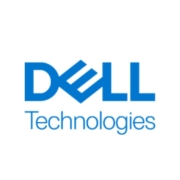Edge Computing Platforms facilitate real-time data processing at the edge of a network, reducing latency and enhancing performance. They are crucial for applications like IoT, autonomous vehicles, and smart cities, delivering faster insights and decision-making.
The top 5 Edge Computing Platform solutions are Scale Computing Platform, ClearBlade Edge Platform, Azure IoT Edge, Dell NativeEdge and Fastly Compute, as ranked by PeerSpot users in November 2025. Scale Computing Platform received the highest rating of 9.5 among the leaders and is the most popular solution in terms of searches by peers, and ClearBlade Edge Platform holds the largest mind share of 22.5%.
As data grows exponentially, Edge Computing Platforms play a key role in managing and processing information closer to its source. This approach minimizes latency and bandwidth use, making it ideal for time-sensitive applications. By balancing workloads between edge and center networks, these platforms enable smarter operations and more efficient resource use.
What are the critical features of Edge Computing Platforms?Edge Computing Platforms find applications across industries such as manufacturing, where they enable predictive maintenance by processing equipment data locally, and in healthcare, where they allow for quicker data analysis in hospitals enhancing patient care. Automotive industries employ them for real-time navigation and vehicle control systems.
This category provides businesses with an opportunity to enhance their operational capabilities by offering a solution that processes data closer to where it is generated. Organizations gain significant competitive advantage by reducing latency, lowering costs, and improving service response times.
| Product | Market Share (%) |
|---|---|
| ClearBlade Edge Platform | 22.5% |
| Azure IoT Edge | 22.1% |
| Dell NativeEdge | 18.6% |
| Other | 36.8% |











Edge Computing Platforms significantly improve IoT device performance by processing data closer to where it is generated. This minimizes latency, allowing for real-time data analysis and faster decision-making. As an IoT professional, utilizing edge computing can help you deploy more efficient systems, reduce bandwidth use, and ensure better operational efficiency.
What are the security benefits of using Edge Computing Platforms?By employing Edge Computing Platforms, you improve your system's security posture. Processing data locally reduces the amount of sensitive information transmitted over networks, decreasing the risk of interception or unauthorized access. These platforms also allow for more localized security protocols, giving you more control over data protection in remote environments.
How can Edge Computing Platforms optimize cloud infrastructure?Edge Computing Platforms complement cloud infrastructure by offloading data processing tasks, which reduces the load on central servers. This ensures efficient data management and faster response times. You can benefit from cost savings as less data needs to be sent to the cloud, ensuring optimal performance for your cloud-based applications.
What industries benefit most from Edge Computing Platforms?Sectors such as manufacturing, healthcare, and retail gain significant advantages from Edge Computing Platforms. In manufacturing, edge computing allows real-time monitoring of equipment and processes, improving efficiency and reducing downtime. Healthcare benefits from faster data processing, ensuring timely medical interventions. Retail can utilize edge computing to enhance customer experiences with real-time data analytics.
How do Edge Computing Platforms support AI and machine learning applications?These platforms enhance AI and machine learning by providing the necessary computational power at the data source. This enables faster data processing and reduces latency, crucial for real-time analytics. By deploying AI at the edge, you allow for improved decision-making capabilities, especially in environments requiring immediate actions based on data insights.